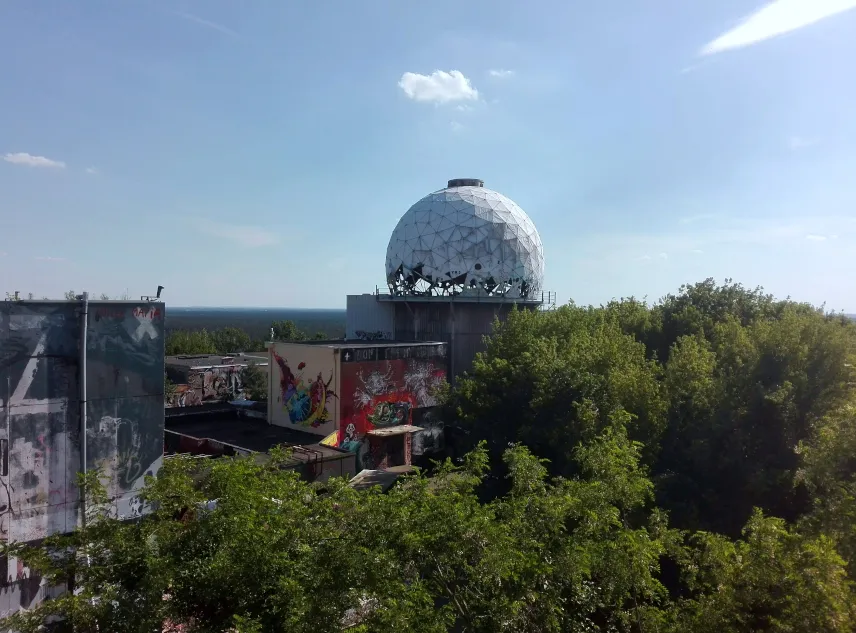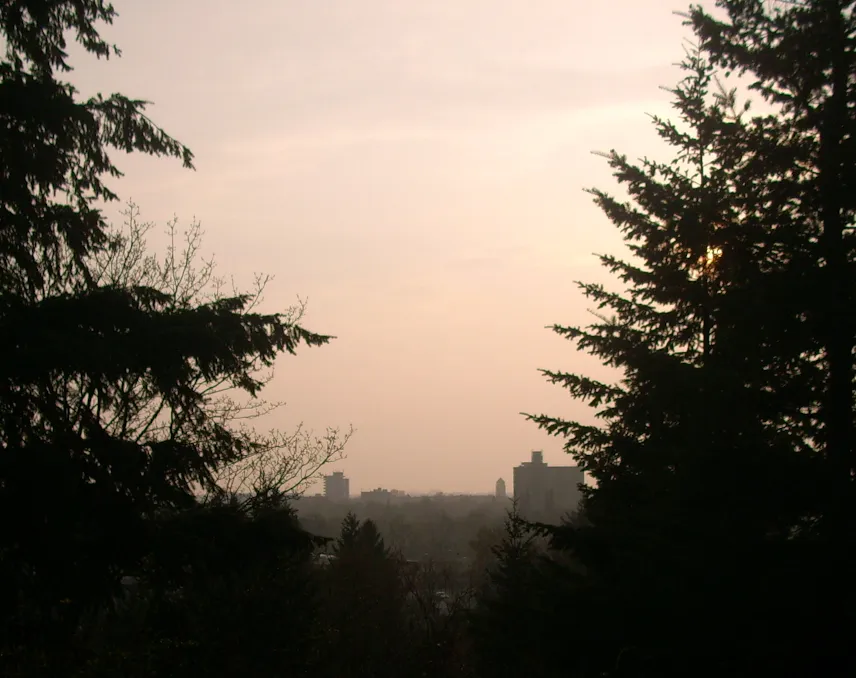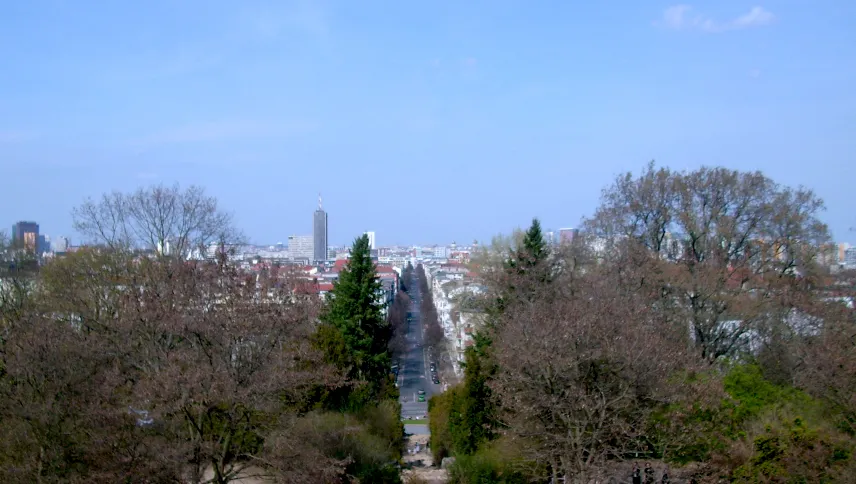
Trümmerberge: Best Views in Berlin – for Free
TL;DR
Although Berlin is very flat by nature, you can find your Berlin views on many man-made debris hills (Trümmerberge) in the city. They offer the best views of Berlin – be it north, south, east or west Berlin.
If you’re looking for unusual and free things to do in Berlin, debris hills or Trümmerberge might peak your interest. On these hidden gems in Berlin, you will rarely find any other tourists - and some like the Teufelsberg or the Humboldthöhe even hide away lost places. Climbing debris hills belongs to non touristy things in Berlin and will reward you with unique Berlin views!
- Debris hills (Trümmerberge) in Berlin
- Best Berlins Viewpoints – Debris Hills (Trümmerberge)
- Berlin Teufelsberg 120 meters (394ft) – the one with a great view over west Berlin
- Berlin Kienberg 102 meters (335 ft) – the one view a great view over east Berlin
- Berlin Humboldthöhe 85 meters (279 ft) – the one with a flak tower
- Berlin Dörferblick 86 meters (282 ft) – the one with a great view over south Berlin
- Berlin Marienhöhe 73 meters (240 ft) – the sentimental one
- Berlin Kreuzberg 66 meters (216 ft) - the honorary mention
Debris hills (Trümmerberge) in Berlin
Berlin is notoriously flat. This is the fault of the last ice age (the Weichselian glaciation): 20000 years ago Berlin was covered by 100 meters (328 ft) of ice. When the ice melted it created a glacial valley (Berliner Urstromtal) with modern-day Berlin in its center. The highest natural "mountain" is the Großer Müggelberg with 114.7 meters (376 ft). It was also formed by ice ages (Saale and Weichsel) and is mostly composed of sand and till. End of geology nerd talk.
And then there are the debris hills or Schuttberge. You can find them all over Germany but the majority is located in Berlin. The amount of debris in Berlin is about 15% of the total debris in the whole of Germany. Debris hills are man-made hills amassed out of debris from construction sites. Many of them are rubble mountains, which were formed from the debris of World War II bombings. The highest debris hills in Berlin are the Arkenberge with 120.7 (396 ft) - and with that the highest mountains in Berlin.
Best Berlins Viewpoints – Debris Hills (Trümmerberge)
Berlin Teufelsberg 120 meters (394ft) – the one with a great view over west Berlin
Many of you were very interested in the background of the Teufelsberg, so here it is: after World War II, rubble was amassed over the unfinished Nazi military-technical college (Wehrtechnische Fakultät). The Allies tried to demolish the building using explosives but it was too sturdy. As West Berlin formed an island during the separation of Germany, all the debris from West Berlin had to be dumped within its borders making this the perfect dumpsite. For over 20 years, 75 million m³ (98 million cu yd) of rubble was moved from West Berlin to the shells of these old Germania buildings. So came about the second-highest mountain in Berlin.
From here, you have a great view over the Grunewald forest and western Berlin with the Funkturm (the West Berlin TV Tower). As the area belonged to West Berlin during the Cold War, there is an old U.S. listening station on the hill, which you can visit. Fun fact: In 1955, a 24 m long (79 ft) ski jump opened on the hill.

Berlin Kienberg 102 meters (335 ft) – the one view a great view over east Berlin
The base of the Kienberg is a glacial hill. From 1966 to 1981 debris and rubble were deposited on this hill. The Kienberg forms a large green area with the Wuhletal (which is a great hiking area) and the Gärten der Welt (Gardens of the World). In 2017, the Gardens of the World and the Kienberg were part of the Internationale Gartenausstellung (international horticultural exhibition).
In the course of this exhibition, a summer toboggan run and a cable car were constructed on the Kienberg. The ride with this 1.5 km (0.9 miles) long aerial tramway takes 5 minutes and takes you directly from the subway station to the top of the mountain. A truly unique experience in Berlin! From the top of the mountain, you have a great view over the characteristic Plattenbauten (tower blocks) of Marzahn-Hellersdorf. In the distance, you can see all the way to the TV Tower.

Berlin Humboldthöhe 85 meters (279 ft) – the one with a flak tower
At the beginning of World War II, two flak towers (Nazi anti-aircraft towers) were constructed in Humboldthain Park. After the war, the bunkers, like all other bunkers in Berlin, had to be demolished by several explosions. The northern wall of the bigger tower was left intact to not damage the train tracks running beneath it.
After many thorough inspections, the roof of this flak tower is now used as a viewing platform, its wall is used as a climbing wall by the German Alpine Club. In my opinion, the real highlight of this rubble hill is what lies beneath it: members of the Berliner Unterwelten e. V. (not sponsored, only a genuine fan) emptied parts of the tower and offer tours now. I can honestly say that this was one of our favorite things we've ever done in Berlin!

Berlin Dörferblick 86 meters (282 ft) – the one with a great view over south Berlin
The Dörferblick was amassed as a World War II rubble hill in 1958. It was located in the very southeast of West Berlin, directly next to the Berlin Wall. On the top of the hill you had a view over the wall to the East German villages Schönefeld, Waßmannsdorf, and Großziethen - hence the name Dörferblick or village view.
In our opinion, the much better viewpoint in this area is the Skypoint. You can reach it by a short 5 km (3 miles) hike along the Berliner Mauerweg (Berlin Wall path) which is super interesting in itself. On this Müllberg (garbage dump hill - yes they are a thing in Germany but this is the material for another blogpost) your view towards south Berlin is not obstructed by trees as it can be on the Dörferblick and you can see all the way to the TV Tower in central Berlin.

Berlin Marienhöhe 73 meters (240 ft) – the sentimental one
The Marienhöhe is another rubble hill, which was formed over a natural glacial hill. At the end of the 19th century, sand and gravel were quarried at the foot of this hill. Because of the light sand, many western movies were shot here in between the two world wars. After World War II, 190000 m³ (248510 cu yd) of rubble were amassed over the gravel pit and the glacial hill, forming the recent Marienhöhe.
The view might not be the most spectacular but this is the debris hill most close to home for us - and I mean this literally.

Berlin Kreuzberg 66 meters (216 ft) - the honorary mention
No, this is not a debris hill, this is a natural hill, which was formed by the ice age. Why is this mountain on this list then? The Kreuzberg is the highest mountain in central Berlin and the views are just amazing. You're super close to the Potsdamer Platz, you can see the TV Tower and the old Schultheiss brewery. On top of this hill is a national monument.
Additionally, this mountain is super easy to reach by subway, there are many bars and restaurants in this area and the adjacent park invites you to relax a bit from your strenuous sightseeing trip. This is definitely the one hill viewpoint I recommend you to visit when you only have a limited amount of time in Berlin but want to enjoy a free view nonetheless!
